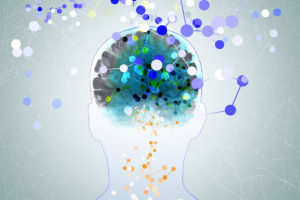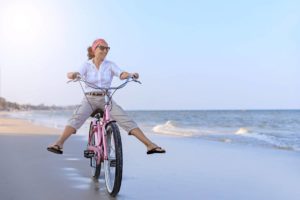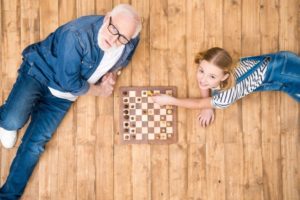Aging is inevitable. How we age is another matter entirely, and active aging is more than the future of fitness—it’s what’s happening now for everyone, no matter which generation they’re in. Why? Because the cumulative effects of the calendar compound minute by minute, and every tick of the clock is another opportunity to prioritize health and wellness. Active aging “connotes a radically nontraditional paradigm of aging which posits possible improvement in health despite increasing longevity,” according to James F. Fries, MD, professor emeritus of immunology and rheumatology at Stanford University. “The new paradigm is based upon postponing functional declines more than mortality declines and compressing morbidity into a shorter period later in life.”
How do fitness professionals fit into this new paradigm, and how can they best support clients in all stages of aging, from master’s athlete to frail and longing for function?
Here’s how active aging trends are lining up for 2022 and beyond:
- The popularity of “life plan communities,” that tend to attract residents who are committed to maintaining their health and independence for many years. Many of these communities need fitness and wellness experts.
- Cognitive health, also known as “brain fitness.” Physical activity has been linked to improved cognitive performance and reduced risk for Alzheimer’s disease, a valid selling point for personal trainers.
- Working out at home is just as popular for older adults as it is for other demographics, and it extends to telemedicine. Fitness professionals who meet virtual clients where they are may find lasting success.
The above trends are just a warmup! IDEA Health & Fitness Association has been researching and reporting active aging trends for years, with a vast content library and a proven commitment to helping fitness professionals succeed.
Aging Well, Staying Active
IDEA understands the concept of aging well; after all, we just turned 40 and we’re as fit as ever! Fitness professionals understand that physical activity is one key to helping clients retain function and be able to effortlessly navigate activities of daily living, whether it’s balancing grocery bags while opening the front door or getting up and down from the ground when playing with grandchildren. IDEA and its members know that as the worlds ages, we have an opportunity to improve the collective lifespan.
That is what the “plus” stands for in our reimagined membership—it represents all that you do to Inspire the World to Fitness®.
As a member, you have access to vast content and resources, and we’ve featured a small fraction of our library below. If you’re not a member, you can still access this education and get a feel for our community.
Articles
Age Well With These Resources:
Effects of Aging on the Neuromuscular System
Most people think of the “baby boom” as a huge uptick in the birthrate following World War II, and while that’s true, here’s another view: By the end of 2030, all baby boomers will be over the age of 65 (United States Census Bureau 2018), resulting in a “senior boom.” As this shift occurs, it’s increasingly likely that fitness professionals will need to work with people who are experiencing normal age-related physiological changes. Understanding how these changes impact seniors is essential for trainers and instructors wanting to best serve this population’s unique needs.
Functional Aging and Hormone Health
Understanding functional aging and the impact of activity on hormones can arm fitness trainers to help clients with their active aging goals.
Functional Training for Active, Independent Living
Healthy aging is more than the absence of disease, according to the World Health Organization: “For most older people, the maintenance of functional ability has the highest importance” (WHO 2015). Colin Milner, founder and CEO of the International Council on Active Aging in Vancouver, British Columbia, echoes that statement: “When looking at the healthy aging market today, the focus is all about function. The World Report on Ageing and Health (WHO 2015) focuses on function as a key element, because loss of functional abilities significantly impacts life quality. Having a chronic health issue, like diabetes or high blood pressure, is...
Stand Up to Aging
Getting up off the ground grows more difficult as we age. Muscles and bones weaken, coordination becomes less fluid, and simply doing chores around the house gets more challenging. Ground-to-standing (G2S) exercises address these changes. hile even performance athletes can benefit from G2S drills (see the sidebar “G2S Exercises Also Help Performance Athletes”), they’re supremely helpful for older exercisers who are at risk for broken hips and other threats to their mobility.
Video
View Active Aging Education:
-
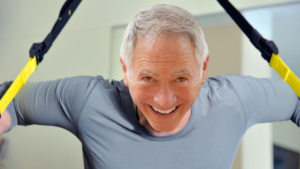
ACE IFT®-Integrated Fitness Training® Model for Active Aging Adults
The 55+ age group represents the fastest-growing segment within the fitness industry. They are characterized by a need to maintain…
-
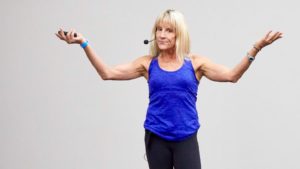
Functional Flexibility for the Active Aging
As clients age, flexibility decreases. In this session, you will walk away with specific scientific techniques to train the active-aging…
-
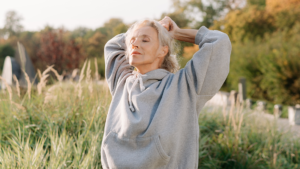
Baby Boomers-The Truth About Stretching!
Do you ever wonder why so many stretching routines seem to come up short? Well, muscle is usually not the…
IDEA Guides
Check out these other great topics
Interested in learning more about how to grow with the fitness industry as it enters a new era? IDEAfit+ affiliation is the key to life-long success as a fitness and wellness professional.
